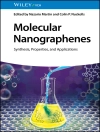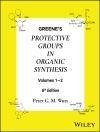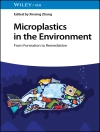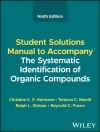Anion recognition plays a critical role in a range of biological processes, and a variety of receptors and carriers can be found throughout the natural world. Chemists working in the area of supramolecular chemistry have created a range of anion receptors, drawing inspiration from nature as well as their own inventive processes. This book traces the origins of anion recognition chemistry as a unique sub-field in supramolecular chemistry while illustrating the basic approaches currently being used to effect receptor design. The combination of biological overview and summary of current synthetic approaches provides a coverage that is both comprehensive and comprehensible. First, the authors detail the key design motifs that have been used to generate synthetic receptors and which are likely to provide the basis for further developments. They also highlight briefly some of the features that are present in naturally occurring anion recognition and transport systems and summarise the applications of anion recognition chemistry. Providing as it does a detailed review for practitioners in the field and a concise introduction to the topic for newcomers, Anion Receptor Chemistry reflects the current state of the art. Fully referenced and illustrated in colour, it is a welcome addition to the literature.
Tabela de Conteúdo
PREFACE;
CHAPTER 1;
1.1: Importance of Anions in the Modern World;
1.2: The Challenges of Anion Complexation;
1.3: Anions in Biological Systems;
1.4: Historical Overview of Synthetic Anion Receptor Chemistry;
1.5: Measurement Methods: Caveats and Limitations;
1.6: Summary Remarks;
CHAPTER 2: Classic Charged Non-Metallic Systems;
2.1: Polyammoniums;
2.2: Quaternary Ammoniums;
2.3: Guanidiniums;
2.4: Amidiniums;
2.5: Imidazoliums;
2.6: Thiouronium;
2.7: Summary Remarks;
CHAPTER 3: Protonated Expanded Porphyrins and Linear Analogues;
3.1: Introduction;
3.2: Cyclic Systems;
3.3: Linear Receptors;
3.4: Summary Remarks;
CHAPTER 4: Neutral Non-Metallic Systems;
4.1: Amide-Based Anion Receptors;
4.2: Peptide-Based Receptors;
4.3: Urea-Based Anion Receptors;
4.4: Alcohol-Based Anion Receptors;
4.5: Hybrid Receptors;
4.6: Other Systems;
4.7: Summary Remarks;
CHAPTER 5: Neutral Pyrrole Systems;
5.1: Introduction;
5.2: Cyclic Receptors;
5.3: Linear Receptors;
5.4: Summary Remarks;
CHAPTER 6: Receptors for Ion Pairs;
6.1: Introduction;
6.2: Ditopic Receptors;
6.3: Cascade Complexes;
6.4: Receptors for Zwitterions;
6.5: Dual Host Extraction of Salts;
6.6: Summary Remarks;
CHAPTER 7: Metal and Lewis Acid Based Receptors;
7.1: Lewis Acidic Receptors;
7.2: Metals as Organizers;
7.3: Other Anion Receptors Containing Metals;
7.4: Summary Remarks;
CHAPTER 8: Sensors;
8.1: Introduction;
8.2: Devices that Employ Anion Selective Membranes;
8.3: Discrete Molecular Electrochemical Anion Sensors;
8.4: Discrete Molecular Optical Anion Sensors;
8.5: Displacement Assays;
8.6: Assays Based on Deaggregation Phenomena;
8.7: Summary Remarks;
CHAPTER 9: Anion Controlled Assembly and Template-based Synthesis;
9.1: Introduction;
9.2: Halide Controlled Assemblies;
9.3: Oxyanion Directed Assemblies;
9.4: Polyfluoro-anion Directed Assemblies;
9.5: Summary Remarks;
CHAPTER 10: Afterword












